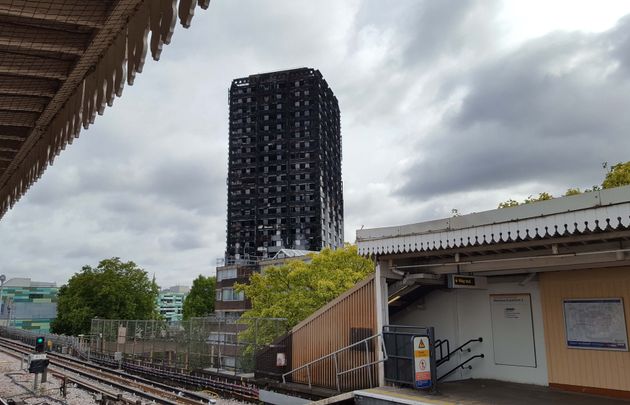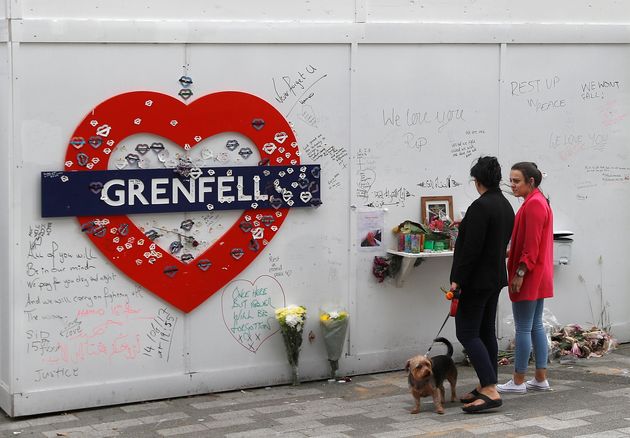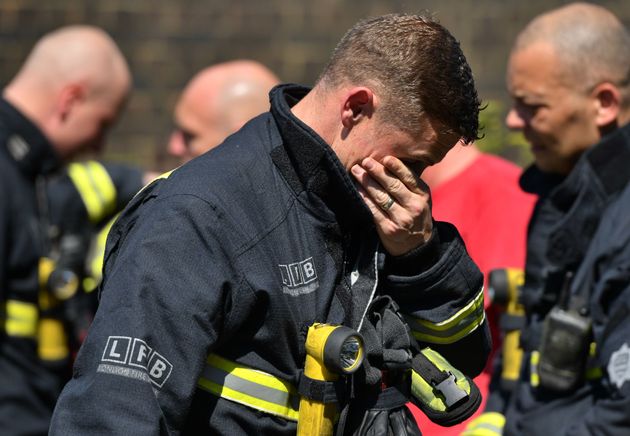
This week, the ongoing public inquiry into the Grenfell Tower disaster heard evidence from firefighters who tackled the blaze.
Thomas Furnell, Scott Bell, Elliott Juggins, Matt Leaver and Peter Wolfenden, all of London Fire Brigade, as well as control room call handler Alexandra Norman, gave statements to the public hearing chaired by judge Sir Martin Moore-Bick.
Seventy-two people lost their lives, and hundreds more were displaced from their homes after the fire on June 14, 2017.
Here are some of the key facts we learned this week:
Control room supervisor felt “very uncomfortable” about stay-put advice
Residents inside the burning block were instructed to remain in their flats until 2.47am on the night of the blaze, nearly two hours after emergency services were first called.
Alexandra Norman, the temporary operations manager at the London Fire Brigade (LFB), lost confidence in the strategy by 2am, the inquiry was told on Thursday.
But a lack of communication from crews battling the inferno meant it was unclear whether it would be safe to tell residents to escape, she claimed.
Stay-put advice is only considered desirable if a flat is not directly affected by smoke or fire.
The blaze began on the fourth floor
Matthew Leaver, a watch manager from the fire investigation team at Dowgate fire station in central London, began his examination of the block while the upper floors were still alight.
The fire had started in flat 16 on the fourth floor, home to taxi driver Behailu Kebede, before spreading at catastrophic speed up the building’s external face, which was coated in a combustible cladding system.

Investigators think a Hotpoint fridge-freezer caused the tragedy
Kebede’s fridge-freezer was believed to have been the origin of the blaze, according to a statement by Leaver – who carried out numerous examinations of flat 16 in the days and months following the fire.
He wrote in a statement: “In some ways, fridge-freezers are a necessary evil. You have to leave them on all the time, fridge-freezers are regularly identified as the cause of origin for fires.
“From what I have seen, I believe the fire to have started in the compressor compartment at the back of this fridge-freezer. All the information gathered and post-fire indicators indicates to the compressor.”
Eventually, evacuation beyond the 11th floor was impossible
“If we have got firefighters in full… equipment struggling to get past the 11th floor with breathing apparatus on, with their training in groups and teams, with hoses – what chance did people still on the 20th, 21st, 23rd floors have in a pair of slippers and dressing gowns?,” crew manager Peter Wolfenden told the inquiry.
He was processing 999 call information at the burning block when he was told rescuers were no longer travelling beyond the 11th floor.
At the time, he was holding several pieces of paper – or chits – with information about residents trapped above that level.
Asked for his views on whether an evacuation should have taken place, he told the hearing: “When we got told no-one above the 11th, I got this really weird feeling of total dread.”
Every single flat above the 11th floor was completely burnt out by 7.30am
Wolfenden said he held out hope families on the upper floors could survive until he saw the outside of the west London tower block after sunrise.
He said: “I left the tower at 7.30am and I was still convinced there were people in the flats with the doors closed and the windows closed that were safe, that we would get to them still at 7.30/8.30am.
“Then I get outside and looked up and every single flat above the 11th floor on the side we were on was a blackened, charred mess.”

The blaze had a dire impact on the health of firefighters
The lobby of Grenfell Tower became strewn with medical kits as exhausted firefighters collapsed after returning from the burning upper floors.
Daniel Morrison, a crew manager from Tooting, had been overseeing radio traffic at the base of the tower,
Giving evidence at the inquiry on Wednesday, he was asked about the state of firefighters returning from rescue missions that night.
“We had guys that were being carried out by our own crews due to heat stress and total exhaustion,” he said.
“I wasn’t up there, but the conditions were brutal and the crews were being punished and pushing themselves beyond what any of our policies state they should go to.
“We had firefighters collapsing, being administered oxygen right next to the entry control.
“At one point, the whole foyer was just covered in remnants of emergency aid kits, helmets floating about from where we had literally stripped firefighters and carried them off.
“It was really brutal.”
The London Fire Brigade control room received more calls that night than in the previous decade
The LFB has faced fierce criticism for not ordering an evacuation of the 24-storey block until 2.47am.
It has also faced backlash for the length of time it continued to advise 999 callers trapped in the burning block to remain in their flats.
It became apparent people were caught up in the fire at 1.28am, the incident log showed.
The service received more calls from people asking for fire survival guidance on that one night than in the previous decade across London.
Officers at the scene of the inferno escalated their demands drastically in the space of five minutes.
Emergency crews on the ground increased their request for10 fire engines – or pumps – to 20 in the space of five minutes upon arriving at the scene at about 1am.
This demand increased to 25 by 1.31am.
The inquiry continues.